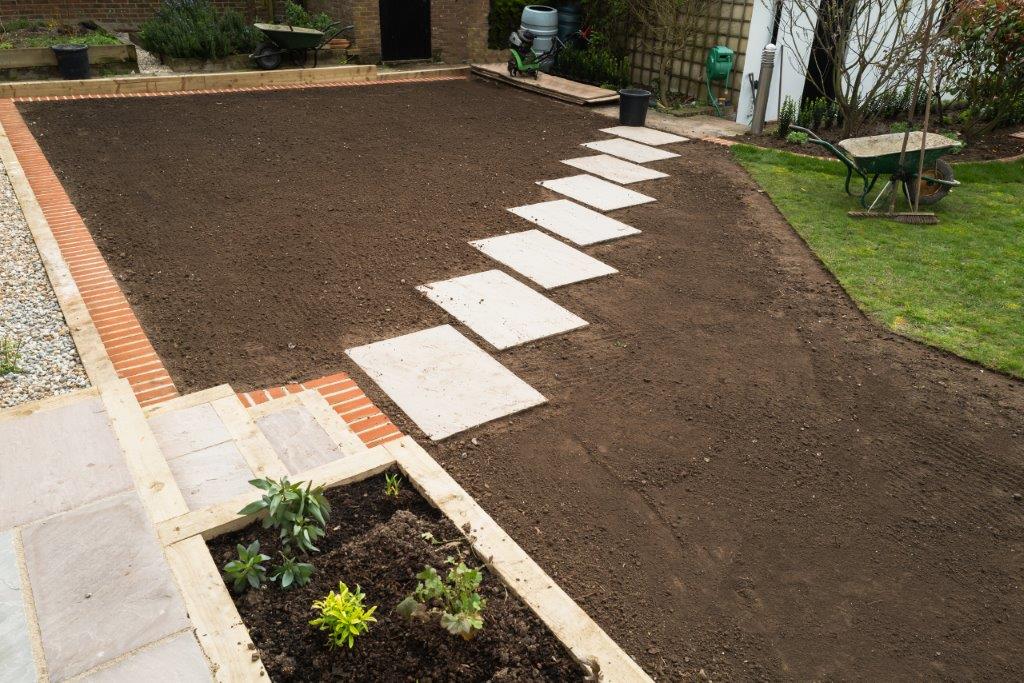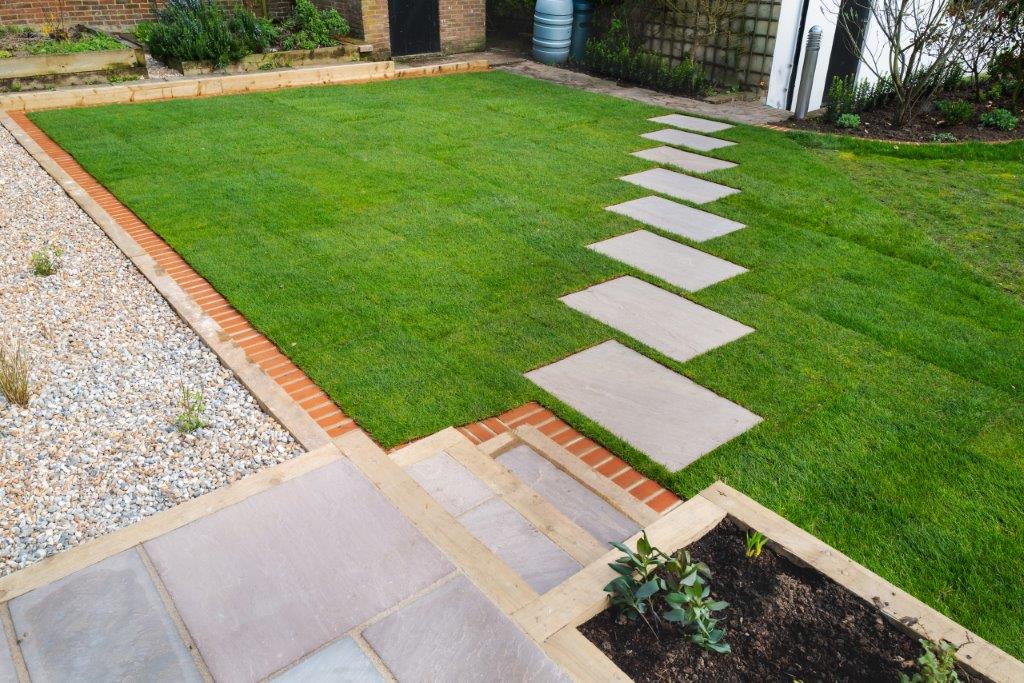How to prepare your soil for instant turf
Author: Stefan Palm Date Posted: 13 March 2025
Soil preparation is by far the most important step in your instant turf project. Good preparation will provide the foundation your lawn needs to become the good looking, hard wearing, drought tolerant surface that you’re looking for.
When it comes to giving advice around soil preparation, we get lots of questions like:
- Can you roll out turf on existing topsoil?
- What is the recommended depth of topsoil to bring in?
- Is Sandy Loam the best type of topsoil?
Let's start with answering the first question...
Can you roll out turf on your existing soil?
There are some instances where you can, but there a re also many instances where you should not. South Australia has a very diverse mix of naturally occurring soil types, ranging from coarse sands to heavy clays. I once had a property that had naturally occurring deep sandy loam in the front yard and hard-setting silty clay in the back yard. In this instance, I did not have to do anything to prepare the front yard, but the backyard needed a fair bit of work. Because of this diversity, it’s hard to come up with a “one size fits all” approach to preparing your soil for lawn. If you're in the process of considering an upcoming instant lawn project, and you're asking yourself whether you need to spend the time and money digging out and replacing your current topsoil, in making that decision, it is helpful to know that there are a few things that lawns don’t like, those being:
re also many instances where you should not. South Australia has a very diverse mix of naturally occurring soil types, ranging from coarse sands to heavy clays. I once had a property that had naturally occurring deep sandy loam in the front yard and hard-setting silty clay in the back yard. In this instance, I did not have to do anything to prepare the front yard, but the backyard needed a fair bit of work. Because of this diversity, it’s hard to come up with a “one size fits all” approach to preparing your soil for lawn. If you're in the process of considering an upcoming instant lawn project, and you're asking yourself whether you need to spend the time and money digging out and replacing your current topsoil, in making that decision, it is helpful to know that there are a few things that lawns don’t like, those being:
- Hard-setting soils,
- Water-repellent or non-wetting soils (where water beads up on the surface of the soil instead of penetrating)
- Rocky soils where there is shallow topsoil
- The presence of remnant building materials such as paving sand and brickies sand.
Go out and have a look at your proposed project area and pay special attention to see whether any of these conditions exist. Planting in conditions such as these will result in unhealthy, poor-performing, high-maintenance lawns. One of the biggest downsides will be the increased amount of water you'll have to use to keep the lawn alive during Summer. If you have poor existing topsoil, I’d recommend removing and replacing a layer in order to give your lawn the best possible start (I’ll talk more about this later).
Lawns love the following:
- Soils that drain freely
- pH-neutral soils
- Soils that don’t set hard.
There are many instances across the western, coastal suburbs where the naturally occurring soils are alluvial sandy loams and are perfect for growing lawns with little to no prepa ration. These include the old market garden areas from West Beach through to Outer Harbour. If your soil is not hard-setting or non-wetting, you may be able to simply remove any existing turf and plant matter, turn it over, level it and roll out your new lawn.
ration. These include the old market garden areas from West Beach through to Outer Harbour. If your soil is not hard-setting or non-wetting, you may be able to simply remove any existing turf and plant matter, turn it over, level it and roll out your new lawn.
What is the recommended depth of topsoil to bring in?
This is a tricky question to answer! It all depends on how good your existing soil is. If you have issues similar to those mentioned above, the best practice is to bring in a 100mm layer of topsoil, which may involve removing some of the existing soil. If you did this, it wouldn't matter too much how bad the soil was underneath, as lawns can live quite comfortably in 100mm of good sandy loam.
If you have some of the issues above, but they don't seem to be extreme, as an alternative, you can condition the top 100mm of existing soil instead of removing and replacing it. Simply remove a 50mm layer of existing soil, apply a 25mm layer of sandy loam, rotary hoe that into the existing soil, then finish off with another lighter layer of sandy loam to smooth the surface off and cover over any lumps of soil that you will have bought to the surface during the rotary hoeing process. This will make the soil surface easier to level.
Is Sandy Loam the best type of topsoil?
This is a question that we get asked a lot, and there are a lot of people on the internet with lots to say about it which can make things confusing. What you use and how much of it will vary according to where in Australia you live, so our advice is based on our experience of what works best in South Australia.
In our opinion, the best type of topsoil to use is sandy loam - that is a soil that is 80% soil and 20% loam with the option of added compost. While some people will accept this as OK, other more curious folk will want to challenge the idea that it’s right to lay a lawn on virtual sand - after all, you wouldn’t think a sandy soil would hold water well!
So why do people in the know recommend sandy loam as the best base for lawns?
Superior Drainage:
One of the primary reasons sandy loam is favoured for new lawns is its excellent drainage capabilities. Unlike clay soils, which can become waterlogged and suffocate plant roots, sandy loam allows excess water to percolate through the soil quickly. This prevents waterlogging, reduces the risk of root rot, and ensures optimal oxygen levels for root development.
Great Moisture Retention:
While sandy soils are known for their drainage, sandy loam strikes the perfect balance by also retaining an adequate amount of moisture. The presence of silt, loam and organic matter in sandy loam helps to hold onto water, ensuring that the soil remains moist enough to support healthy plant growth, even during periods of hot weather.
Enhanced Root Development:
Healthy roots are essential for a thriving lawn, and sandy loam provides an ideal environment for root development. The loose, well-aerated structure of sandy loam allows roots to penetrate deep into the soil, accessing essential nutrients and water. This results in stronger, more resilient grass plants that are better equipped to withstand environmental stresses and competition from weeds.
Easy to Work With:
From a practical standpoint, sandy loam is a joy to work with when establishing a new lawn. Its friable texture makes it easy to till, level, and amend with organic matter or fertilisers as needed. Whether you're seeding or laying turf, sandy loam provides a receptive substrate for planting, ensuring good seed-to-soil contact and promoting uniform germination and establishment.
For more information on how to prepare the soil and install instant turf, click here. If you are unsure or want some guidance, send us an email at info@paulmunnsinstantlawn or bring down a sample of your soil to our store in Hove, and we’ll give you some advice free of charge.
